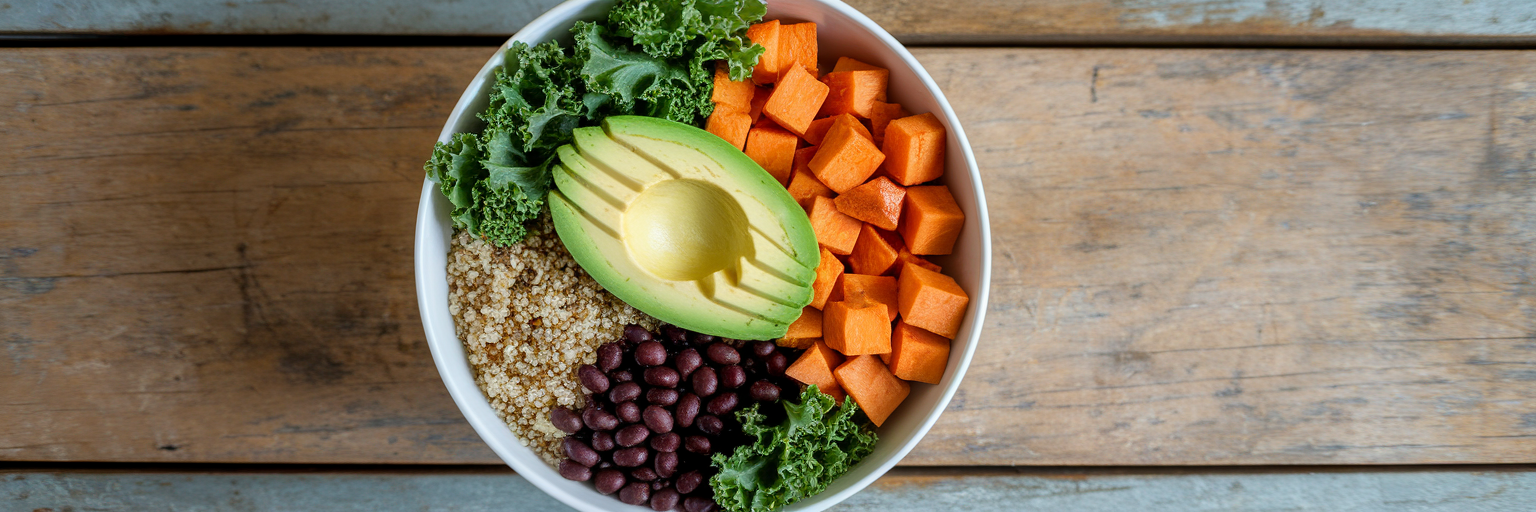The Foundation of Plant-Based Recovery
Every challenging workout operates on a simple principle: you break down muscle to build it back stronger. That satisfying ache after a tough session is the sign of micro-tears in your muscle fibres, the very trigger for growth. But this repair process is not automatic. Without the right fuel, your body struggles to mend that tissue or replenish its energy stores, known as glycogen. This is where strategic plant based muscle recovery becomes essential for seeing real results.
A common misconception is that plant-based diets lack the protein power needed for serious muscle repair. This simply isn't true. The key is not the source, but the composition. A complete amino acid profile vegan sources provide is easily achieved by combining different plant proteins, like pea and rice, which together supply all the essential building blocks your body needs. Think of it less like a single ingredient and more like a complete recipe for repair.
Effective recovery isn't just about protein, though. It stands on three core pillars: high-quality protein to rebuild, complex carbohydrates to refuel, and fluids to rehydrate. Getting this combination right turns your recovery window into your most productive growth period. As you begin to build your strategy, you can explore more foundational topics on our educational platform to deepen your understanding.
Timing and Portions for Peak Performance

You have likely heard of the 'anabolic window', that critical 30 to 60 minute period after exercise. This is when your body is primed for nutrient absorption, making post workout nutrition timing a crucial factor in your success. During this window, your muscles are like sponges, ready to soak up protein for repair and carbohydrates to restock depleted energy. Missing this opportunity means slower recovery and compromised gains.
So, what should you aim for? The goal is a precise, effective intake. For most people, consuming 20 to 30 grams of high-quality vegan protein is the sweet spot for stimulating muscle protein synthesis. But protein alone is not enough. To shuttle those amino acids into your muscle cells efficiently and replenish glycogen, you need carbohydrates. A carb-to-protein ratio of around 2:1 or 3:1 is ideal. This might sound complicated, but it is simple in practice. A smoothie with one scoop of protein powder and a banana, for instance, gets you very close to this target. For more tangible ideas, you can find inspiration in these easy vegan protein recipes.
To help you visualize this balance, here are a few examples of how to combine foods for an effective recovery ratio.
| Recovery Snack Idea | Estimated Protein (g) | Estimated Carbohydrates (g) | Approximate Ratio (Carb:Protein) |
|---|---|---|---|
| Protein Smoothie (1 scoop protein, 1 banana, 1 cup oat milk) | 25g | 40g | ~1.6:1 |
| Oatmeal with Protein Powder & Berries | 30g | 65g | ~2.2:1 |
| Tofu Scramble (150g tofu) with 1 Slice Whole Wheat Toast | 20g | 25g | ~1.3:1 |
| Lentil Soup (1 cup) with a Small Sweet Potato | 18g | 55g | ~3:1 |
Note: These values are estimates and can vary based on specific products and portion sizes. The goal is to illustrate how to combine foods to achieve an effective recovery ratio.
The Power of Amino Acids in Muscle Repair
While we have established the importance of protein, it is the amino acids within that protein that do the heavy lifting. Think of them as the individual workers on a construction site, each with a specific job in rebuilding muscle tissue. To achieve a complete amino acid profile vegan sources offer, you simply need to combine different plant foods throughout your day, such as legumes with grains or a thoughtfully formulated protein blend.
Among these amino acids, one stands out as the project manager: leucine. This branched-chain amino acid (BCAA) acts as the primary trigger that signals your body to begin muscle protein synthesis. As noted in studies published in the journal Sports Medicine, leucine is a key trigger for initiating the muscle protein synthesis required for repair and growth. Without enough leucine, the repair process never fully gets started, no matter how much protein you consume.
This is why the quality of your protein matters. A well-formulated supplement is designed to provide a robust amino acid profile rich in leucine, making it the best vegan protein for recovery. However, whole foods like lentils, tofu, and quinoa are also excellent sources. A balanced approach that includes both a convenient, high-quality protein powder and nutrient-dense whole foods gives you the best of both worlds. If you are unsure where to start, this guide on the best protein powders can help you choose the right one for your goals.
Building the Perfect Recovery Meal

Now it is time to put theory into practice. Knowing what to eat after a workout as a vegan should not be a puzzle. A perfect vegan post workout meal combines the principles of timing, portions, and nutrient quality into something delicious and effective. It is about more than just protein and carbs; it is about creating a synergistic meal that supports every aspect of recovery.
Here are the key components to include:
- Smart Carbohydrates: These are your energy-restocking heroes. Choose complex carbs like sweet potatoes, oats, quinoa, and fruit. They replenish your glycogen stores steadily without causing a sugar crash, providing sustained energy for the rest of your day.
- Anti-Inflammatory Fats: Intense exercise can cause inflammation. Healthy fats from sources like avocado, chia seeds, flaxseeds, and walnuts help manage this response, reducing soreness and supporting overall joint health.
- Antioxidant-Rich Foods: Workouts also produce oxidative stress. Counter this by loading up on antioxidants from berries, dark leafy greens like spinach and kale, and colourful vegetables.
Putting it all together is easy. Try one of these simple ideas:
- The Ultimate Recovery Smoothie: Blend 1 scoop of our Chocolate Vegan Protein, 1 frozen banana, a handful of spinach, 1 tablespoon of chia seeds, and unsweetened almond milk. It is a complete, fast-absorbing meal in a glass.
- The Power Bowl: Combine 1 cup of cooked quinoa with 1/2 cup of black beans, chopped bell peppers, and a scoop of guacamole. This bowl delivers protein, complex carbs, and healthy fats.
Advanced Recovery and Hydration Strategies
Once you have mastered the fundamentals, a few advanced strategies can further enhance your recovery. These small adjustments can make a significant difference in how you feel and perform day after day. Think of them as the finishing touches on your recovery routine.
First, never underestimate hydration. You lose more than just water when you sweat; you also lose essential electrolytes like sodium and potassium. Replenish them by drinking plenty of water throughout the day. For an extra boost after an intense session, consider coconut water or adding a tiny pinch of mineral-rich sea salt to your water.
Next, incorporate functional foods known for their anti-inflammatory properties. Turmeric and ginger are two powerful examples. Adding a teaspoon of turmeric to a smoothie or grating fresh ginger into your post-workout meal can help naturally reduce muscle soreness.
Finally, remember that the best plan is the one that works for you. Listen to your body. Some days you might need more carbohydrates, while on others, you might feel better with a lighter meal. Pay attention to your energy levels, soreness, and overall well-being, and do not be afraid to adjust. Your fitness journey is personal, and finding what works best for you is the ultimate goal. Feel free to explore our full range of plant-based options to find the perfect fit for your unique needs.





